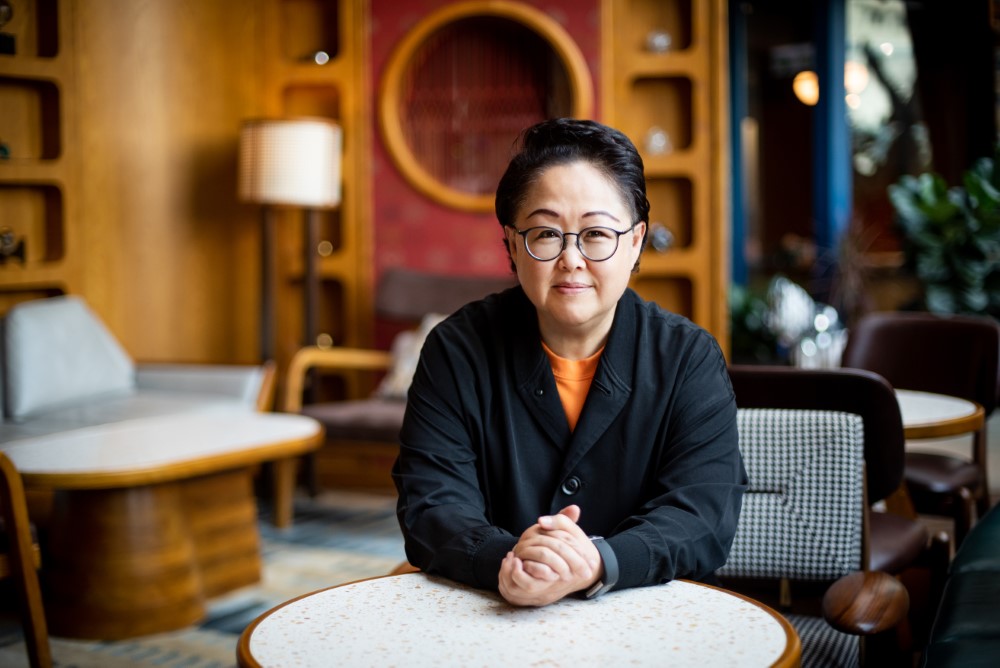Secret Sauce to Driving Multicultural Inclusion Through Design Thinking
When done right, Design Thinking can debunk cultural stereotypes and assumptions, spur actions, and give birth to innovative solutions that increase inclusivity in our city. Here, we share our secret sauce to creating a Design Thinking journey that empowers participants from diverse backgrounds and drives lasting impact.
A multicultural city lauded for its diversity, Hong Kong is home to a full spectrum of people — 8% of which belong to a minority ethnic group. As community members, we encounter each other daily — in our neighbourhood, at work, we rub shoulders as we walk down the street. But how much do we know about each other?
For too long, we see a lack of opportunities for interaction and collaboration among different ethnic groups, where deeper understanding can be achieved and solutions to increase inclusion can be explored. In many ways, this has contributed to and fueled misconceptions about other cultural beliefs, values, and traditions, perpetuating the bias and stereotypes that undermines our efforts to build a more inclusive society.

Partnering with Social Enterprise Summit, a cross-sector platform on social innovation and social entrepreneurship, we co-hosted【Multi-Shades of Hong Kong】Community Innovation Lab @ Yau Tsim Mong. It was an 8-week incubation programme where we engaged local Chinese and members of ethnic minorities in an honest, empathy-driven dialogue on multicultural inclusion.
But real inclusion takes more than a dialogue. As we see it, it requires actions that translate dialogues and insights into concrete ideas and scalable solutions. With this in mind, we designed the programme with Design Thinking as the backbone. Comprising 2 Design Thinking workshops, a 6-week implementation period, and a sharing session, the programme offers an opportunity for some 20 participants from different cultural backgrounds and experiences to embark on a Design Thinking journey to bring forth greater inclusion in the Yau Tsim Mong community.
By curating immersive experiences, providing training and coaching along the way, we empowered them with the tools to collaboratively build and design solutions that would bring different ethnic groups closer together.
While simple to explain, it was no ordinary Design Thinking journey! Mindsets were challenged and changed; lasting friendships were made, three prototypes were developed to plant the seeds of inclusion in the community. Here, we share the secret sauces in designing this multicultural Design Thinking journey. We hope to give you some insights to take your existing multicultural inclusion initiatives to the next level.
1. Celebrate differences, but also focus on what’s in common
When we attempt to address complex problems such as multicultural inclusion, we seek combined wisdom from different fields to better understand the issue. For this reason, we recruited participants with diverse backgrounds and skills for the programme. From ethnic minority youth, social entrepreneurs to scholars, we put them into teams to ensure each team has a good mix of perspectives and skillsets.
However, this diversity also makes navigating the people’s dynamics in teams one of the most challenging parts of our Design Thinking journey. The keys to working around this and creating an atmosphere conducive to meaningful connections and discussion are: 1) cultivating a shared vision that rallies team members behind common goals and 2) practising transparent communication.
- Cultivate a shared vision that unites
Prior to the official kick-off of the programme, we organised a briefing session where participants convened to mingle and identify their shared vision and goals for the following weeks of the programme. This session also served as an icebreaker to help team members familiarise themselves with each other and build trust before a shared vision can be put together. This addition is particularly essential for a multicultural team, given that everyone has such different backgrounds and point of views.
We observed that the shared vision and goals motivated participants to open up about pain points they might not typically discuss. It also acted as a unifying force that helped them navigate disagreements as they develop prototypes in the later stage of the Design Thinking journey.
- Practise transparent communication
Managing differences in any collaboration is hard; finding similarities in these differences is even harder. This is especially true in a multicultural team characterised by differences in language, work styles, or values and cultural backgrounds. Transparent communication is requisite because it makes possible the two vital elements essential for collaborations to be successful – trust and engagement.
Throughout the Design Thinking process, we encouraged transparent documentation of ideas with tools like memos and word documents to ensure observations and suggestions are recorded for all to see and build on. So even when participants encounter difficulties expressing themselves, they would still be able to understand each others’ perspectives and engage in the activities.

Considering the dynamics in each team, where individual participants might, perhaps out of respect or fear, hesitate to speak up when with a group of strangers, we brought on board facilitators. These facilitators were there to ensure equal opportunities for participants to discuss their perspectives. They were also constantly on the lookout for and highlighted keywords in discussion to surface the interconnection of ideas, which helped participants focus on the similarities in their team.
In Design Thinking, differences in experiences, point of views, and specialisations are what we need to encourage broader perspectives, but reconciling these differences into a collective decision requires transparent communications and a shared vision to guide the team towards their desired destination.
2. Empathise beyond the walls
An essential step in the Design Thinking process is to build deep empathy with the people you are designing for. In some cases, an in-depth interview would do the job. However, when it comes to issues like multicultural inclusion, more effectively, one has to immerse oneself in the community to put themselves in the shoes of ethnic minorities.
In our programme, we curated a community tour and a human library to help participants empathise and understand what ethnic minorities need so that they can develop a more user-centric solution in the prototyping stage.
From the homes of ethnic minorities to grocery stores to jewellery shops, each stop on the 45-minute community tour was carefully selected to give participants a good grasp of the realities on the ground – the daily lives of and problems confronting ethnic minorities.
The human library hopes to challenge stereotypes and motivate participants to empathise better through stories. Our 3 “human books” – 3 members of different minority ethnic groups – each came with personal experience about the topic. Conversation with each “book” offered participants a different lens through which they can examine their preconceptions. In the process, they disarmed their prejudices and put themselves in a frame of mind that is open to considering new and different ideas.

These were eye-opening experiences, as participants later reflected. While many have dedicated themselves to this cause for years, they acknowledged that these parts of the community have largely been hidden before their eyes until now. This revelation invited participants to re-examine their understanding of the issue, bringing them a deeper level of clarity to the problems they are trying to solve, so they can better serve this community in the future.
3. Facilitate to empower teams to excel on their own
At Good Lab, we believe when people with different backgrounds and thoughts together chip away at the same problem, we are more likely to reach creative solutions, and facilitation helps the teams harness this diversity of thought and channel it productively.
As our facilitators note, the key to effective facilitation in the Design Thinking process is not to help the team find answers but to make them feel empowered to excel on their own. This involves the art of active listening, asking powerful questions, and being flexible in our own thinking to make room for the team’s input. So that in the end, the team knows they got there on their own, and the idea is genuinely theirs to own.
As in any Design Thinking process, there is always a tendency for participants to resort to familiar patterns or base decisions and actions on what has worked in the past, which may not suit the purpose of Design Thinking, nor the needs of the target users.

To steer participants towards the right track, our facilitators offered guiding questions to help their team navigate to different Design Thinking stages as they iterated on their problem definition, ideas, prototype and learned more about their users at any point in the implementation stage.
By the end of the programme, three prototypes were generated. Each of them focused on a different aspect of inclusion:
1. Raising awareness on inclusion through food and ethnic cuisine
2. Facilitating cooperation among ethnic communities
3. Rallying members of different ethnicities towards a shared cause
These outputs are worth celebrating. But we reckoned, the Design Thinking journey itself is more important than where our participants ended up. The prototypes may become irrelevant as time goes by, but the Design Thinking mindset, the disruption of deep-seated assumptions, and the understanding and appreciation of culture we cultivated along the way are what takes impact to the next level.
Rome was not built in a day, and neither is achieving inclusion in the community. That said, our participants are now equipped with the Design Thinking mindset to continue on their journey to create more user-centric solutions and impacts that last long into the future in Yau Tsim Mong.






















 Hands-on Experience
Hands-on Experience 








































